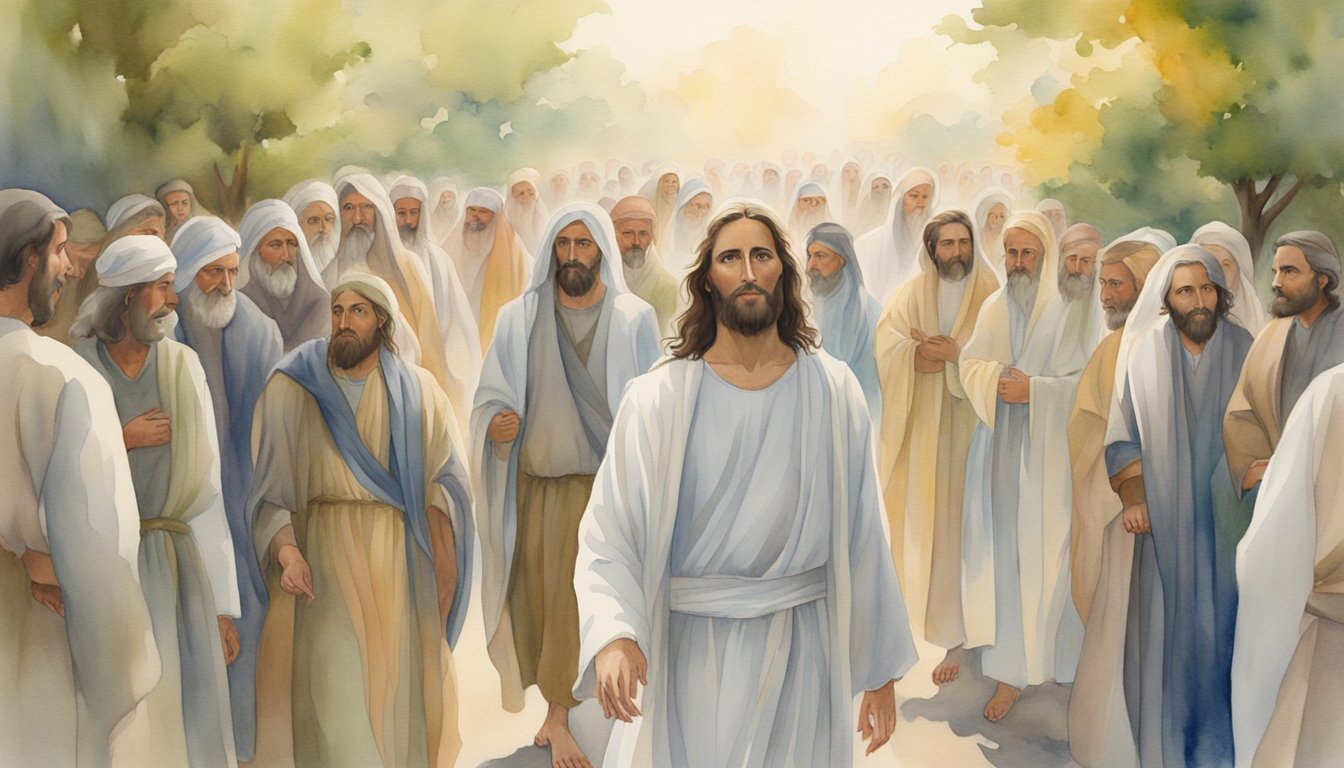Initial Witnesses of the Resurrected Christ
Mary Magdalene’s Encounter
One of the first witnesses of the resurrected Jesus was Mary Magdalene. According to the Gospel of John 20, Mary Magdalene visited Jesus’ tomb and found it empty. Instead of the body of Jesus, she saw two angels and later encountered Jesus himself. Mary Magdalene was a devoted follower of Christ and played an essential role in conveying the news of his resurrection to the disciples.
The Disciples in Jerusalem
After Mary Magdalene informed the disciples about Jesus’ resurrection, some of these disciples had their own encounters with the risen Christ. In Matthew 28, the other women at the tomb also experienced an appearance of Jesus. These women, along with Mary Magdalene, were the initial witnesses of the resurrected Jesus before he appeared to his disciples in Jerusalem.
During these appearances, Jesus showed his hands and feet to prove the reality of his resurrection. The disciples were both surprised and overjoyed to see their master alive once again, as recorded in the Gospel accounts.
On the Road to Emmaus
Another fascinating account of witnessing the resurrected Jesus is found in Luke 24, where two disciples encountered him on their way to a village called Emmaus. They did not recognize him at first, but as they walked together, Jesus began to explain the scriptures to them. It was only when he broke bread with them that their eyes were opened and they realized they had been with the risen Lord. Overwhelmed with joy and amazement, they immediately returned to Jerusalem to share their experience with the other disciples, affirming that Jesus had indeed risen. This encounter highlights the importance of hospitality and openness to strangers, as they unknowingly welcomed Christ himself—an idea echoed in bible verses about welcoming strangers. Their story serves as a powerful reminder that divine encounters often happen in ordinary moments when hearts are open to receiving truth.
Various witnesses saw Jesus after his resurrection over a span of 40 days, providing strong evidence for the truth of the resurrection. These encounters with the risen Christ played a crucial role in the development of the early Christian faith and continue to inspire countless believers today.
Subsequent Appearances and Implications

Appearances to the Apostles
After Jesus’ resurrection, He appeared to His apostles on various occasions. In one instance, Jesus appeared to the apostles, including Thomas who initially doubted the resurrection, saying, “Touch me and see” (Luke 24:36-43). Thomas, upon seeing Jesus, proclaimed his faith by exclaiming, “My Lord and my God!” (John 20:28). Additionally, Jesus appeared to seven of His apostles, including Simon Peter and John, while they were fishing in the Sea of Galilee.
The Great Commission and Ascension
During Jesus’ final appearance to His apostles on a mountain in Galilee, He gave the Great Commission, commanding them to share the Gospel and baptize believers in the name of the Father, Son, and Holy Spirit (Matthew 28:16-20). Jesus then ascended into heaven, as described in Acts 1:3. This event marked the end of Jesus’ physical presence on Earth but also initiated the period leading to the Holy Spirit’s arrival at Pentecost.
Paul’s Transformation and Witness
Paul, originally known as Saul, was a fervent persecutor of Christians before he encountered the resurrected Jesus on the road to Damascus. This encounter led to Paul’s conversion, and he became one of the most influential Christian missionaries (Acts 9:1-9). In his letter to the Corinthians, Paul listed several appearances of Jesus, including one where Jesus appeared to more than 500 people at once (1 Corinthians 15:3-8). This account provides further evidence of Jesus’ resurrection and serves as a testimony of the numerous eyewitnesses.
Testimonies Beyond the Gospels
Various New Testament accounts attest to Jesus’ post-resurrection appearances. In Acts, Peter gave a public defense of Jesus’ resurrection in Jerusalem (Acts 2:22-36). The Gospel accounts of Jesus’ resurrection, though containing some differences in detail, find substantial unity in their descriptions of the events. Furthermore, the presence of the Holy Spirit after Jesus’ ascension during the Pentecost (Acts 2:1-13) solidifies the belief in Jesus’ resurrection. The firsthand accounts of the apostles, such as James (1 Corinthians 15:7) and the many eyewitnesses, provide essential historical evidence of the resurrection, despite any perceived contradictions or discrepancies.

